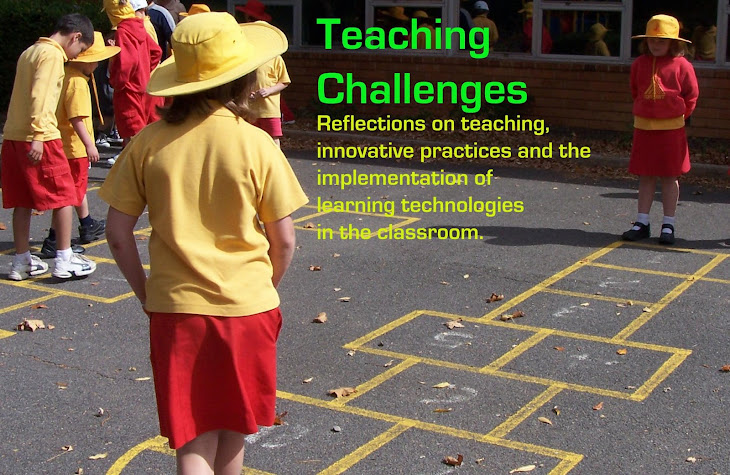 Today my class had a teddy bear picnic and teddy related activities to celebrate reaching the next marker on our class goal chart. As a behaviour management strategy/award system, I give 'ticks' on the chart when I see the sort of behaviours that I want to encourage. These could be from individuals, groups, or the whole class.
Today my class had a teddy bear picnic and teddy related activities to celebrate reaching the next marker on our class goal chart. As a behaviour management strategy/award system, I give 'ticks' on the chart when I see the sort of behaviours that I want to encourage. These could be from individuals, groups, or the whole class.Often I will reward students for walking silently in the corridors, working quietly at their desks, helping out in a special way, showing kindness to another class member, working cooperatively - whatever I think is appropriate.
I read about this in the work of Spencer Kagan as one element of his Cooperative Learning. I like for the students in my class to work together toward a common goal. After 20 ticks on the rainbow chart, the class reaches a sticker point. They then open the envelope to discover their reward. This time...it was a teddy bears' picnic. The class is always very excited about opening the envelope and it can be something as simple as 15 minutes of free drawing and they will still be happy to have achieved that goal.

This time, as we have been learning about their grandparents' childhood, and singing The Teddy Bears' Picnic, I thought it would be fun to bring in teddies and eat lunch together. I was going to leave it at that, but I ended up doing more with the teddies than initially planned.
We began the day by singing some songs to the teddies (as seen in this photo). I took a photo of each child with their bear as they introduced them to the class. After that, we read "Boris and Borsch" by Robin Klein. This story is about two very different boys, with two very different bears and the adventures they got up to when they accidentally swapped houses. The children discussed with a partner which bear they are most like and which home they would prefer to live in.

Students then wrote a description of their bear using prompt words: is, has, does. For example, Fred is a big brown bear. He has soft fur and white paws. He cuddles with me when I am sad and helps to cheer me up.
Some children wrote three sentences, while others wrote many. We then stuck the photos at the top of the pages and bound them together to make a book about our bears. As students finished their writing, they found a quiet place in the room to sit and read a book with their bear.

We went to a special part of the playground called "The Native Garden" where native plants have been planted. The children sat with their bear and their friends and ate their lunches under a big tree. Once they finished, they played with their bear in the garden. Of course, one little boy's bear decided to 'climb' high up in the tree where the little boy couldn't get him! (I went back and climbed up to get him down when the children weren't watching! I still like to climb, but not in front of kids!)
After lunch we had a circle time with our bears and explored a few things with Maths.
Check in: We went around the circle and each child took their turn to say: My name is ____ and I think my bear is bigger than/smaller than/the same size as ______'s bear.
Mixer: We compared the sizes of bears in the circle, ordering them from smallest to largest around the circle. Students sat with their bear in this new seat.
Activity: We sorted the bears in different ways and then used Microsoft Excel on the Smart Board to quickly graph the data. We sorted by fur type, colour, size and leg type/movement!
Energiser: We played a version of 'hot potato' using three of the soft toys - a turtle, a teddy and a kangaroo. Students had to pass these three toys around the circle and avoid being caught out with the kangaroo. The turtle moved slowly, the bear average, and the kangaroo fast. One student covered her eyes and called stop when she chose to. Whoever was holding the kangaroo was out. My class got too silly and rude during this, so I had to stop, but I think I would try it again another time.
Check out: As we went around the circle, each child said "My name is _________ and my teddy bear goes to bed at ________." They moved the hands on a teaching clock to show the correct time.
By the time we made it to the afternoon recess, I was quite beared out, so we didn't continue with the beariness for the last hour. Probably if I were to do the day again, I would consider prizes for different types of bears with the intention of covering everyone - spottiest, biggest, smallest, happiest etc... I would also have liked to had some games or races outside with the bears, or to have played "hide-and-see" like in the song.
All in all it was a great day. I'm sure you also may have done teddy bears' picnics, and I would love to hear about it in the comments.














